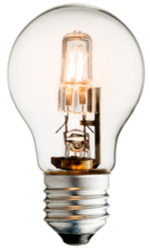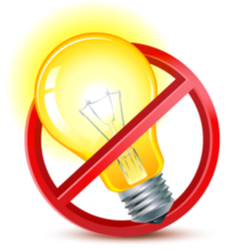When it comes to lighting, incandescent lamps were the type of bulb many Aussie homes turned to for over 100 years. As technology progressed, it was out with the old and in with the new, with more energy-efficient bulbs replacing the outdated incandescent lamp. But are incandescent lights still in production, and can you still get your hands on these globes? Let’s find out.
What is an incandescent light bulb and how do they work?

A standard incandescent light bulb is a pear-shaped lamp used for lighting fixtures around the home, such as lamps and ceiling lights. Offering a low level of brightness, incandescent bulbs generally have a shorter lifespan than newer types of bulbs, and are not as energy efficient.
While incandescent lamps are usually cheaper to buy upfront, they tend to cost more to run over time. That’s because an incandescent light bulb will normally need replacing after approximately 1,000 to 1,500 hours of use, whereas other bulbs can last up to 10 times longer. Furthermore, most incandescent bulbs use more energy to produce the same amount of light from other types, such as LEDs.
Are incandescent light bulbs banned in Australia?

Since 2009, any non-directional incandescent light bulb with an efficiency level of less than 15 lumens per watt have been phased out of production in Australia. According to energyrating.gov.au, the Federal Government has placed an import restriction on incandescent bulbs, followed by a sales restriction which saw many types and variations of the bulb no longer publicly available.
Some of the specific lamp types that have been banned are:
- Tungsten filament incandescent general lighting service (GLS) light bulbs
- Extra low voltage (ELV) halogen non-reflector lamps
- 40-watt candle, fancy round and decorative lamps
Incandescent vs LED
In terms of energy efficiency, LEDs are far superior than incandescent light bulbs. While LED light globes may cost more to purchase at the shops, they will generally last much longer and use less power than incandescent lamps. This will mean bigger savings long term for customers willing to pay a little more initially. Take a look at the table below to compare each light bulb’s features:
| Incandescent light bulbs | LED light bulbs |
|---|---|
| · 1,000 to 1,500 hours lifespan | · 15,000 to 30,000 hours lifespan |
| · Upfront cost between $1 and $5 per bulb | · Upfront cost between $5 and $20 per bulb |
| · Costs approx. $35 a quarter to run for one light bulb | · Costs approx. $7 a quarter to run for one light bulb |
| · Low energy efficiency | · Higher energy efficiency |
| · Can produce lots of heat and are very fragile | · Some LEDs can be remotely controlled via smartphone apps |
The information above is based on a 60-watt incandescent bulb and a 12-watt LED bulb, with a flat electricity usage rate of 27c/kWh.
Can you still buy incandescent light bulbs?
Although incandescent bulbs have been largely phased out across the country, there may be some variations and types for sale online and at specialty homeware stores. Many decorative and vintage lights may require incandescent globes as opposed to their energy-efficient counterparts, due to the softer glow and type of fixture.
Given that incandescent bulbs are estimated to waste 90 per cent of the energy they produce as heat, it’s not difficult to understand why Australia has turned to greener technology. And besides, who wants to pay more for power than you have to?
Image credits: Mohamed Fadly/Shutterstock.com, EvilWata/Shutterstock.com, Kraska/Shutterstock.com, Ramil Gibadullin/Shutterstock.com


Share this article